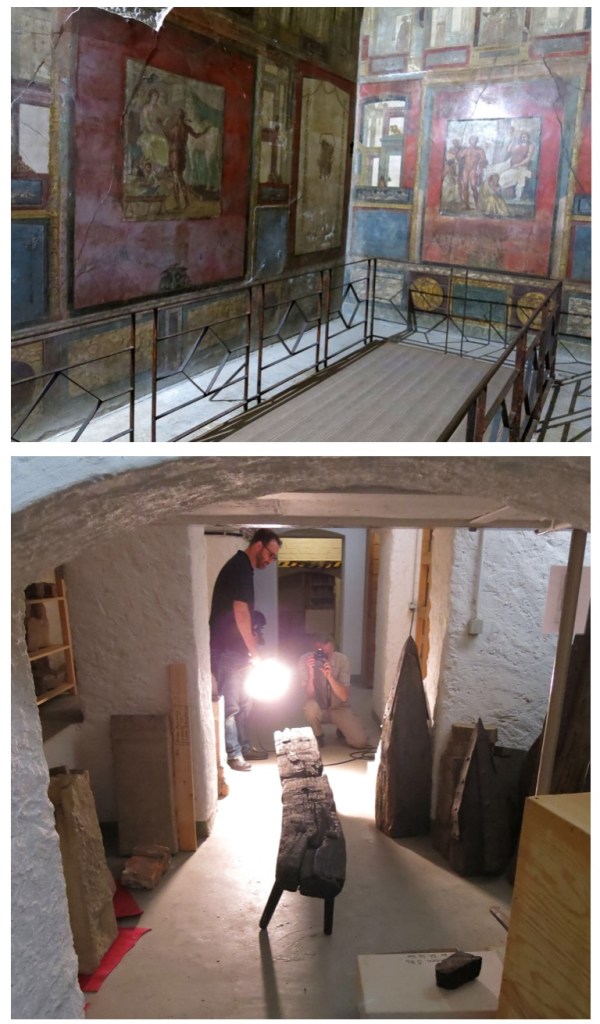
This time last year Chris Schwarz and Narayan Nayar were in Naples, Italy. In between consuming vast quantities of pizza they made a visit to Pompeii to study and photograph a fresco depicting a Roman workbench (Daedalus and Queen Pasiphae are also in the picture). Not long after Chris returned from Italy his limited edition letterpress book, “Roman Workbenches” went to press. And in June, Chris and his friends Görge Jonuschat and Bengt Nilsson traveled to the Roman fort at Saalburg to meet with archaeologist Rüdiger Schwarz to study and photograph two extant Roman workbenches.
The transformation of the planned expanded version of “Roman Workbenches” into “Ingenious Mechanicks” started in mid-July. Things, lots of things, started turning up in our research. While putting together a couple blog posts on Latin American workbenches during the Colonial era, this 18th-century workbench from Colombia turned up.
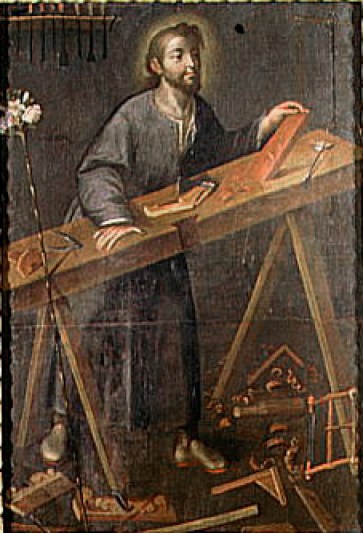
One of the mysteries of the Saalburg workbench is the two dovetail-shaped notches found on the long side of the bench. Half a world away, the Colombia bench had a similar notch and was equally perplexing. Was it for riving, securing a piece for tenoning, a place for a jig or other device? A few days later a different notch showed up, this time from Italy.

A notch on the end of the bench was not so unusual and was normally used for riving or tenoning. This image went into an ‘X-file’ until we had other images or information to help decipher the possible uses of the notch.
Mid-July was blazing hot and humid and as I ran workbench searches (in air-conditioned comfort) a flurry of images were turning up. Anything without a date, artist, title or location went into a ‘Find It’ file. I sent Chris pdfs of benches from Italy, Spain, Germany and other European countries. While trying to verify if one particular painting was Italian or Spanish and its physical location, I just stopped to take a good look at the detail. I was drawn to the toolbox to left of Saint Joseph.
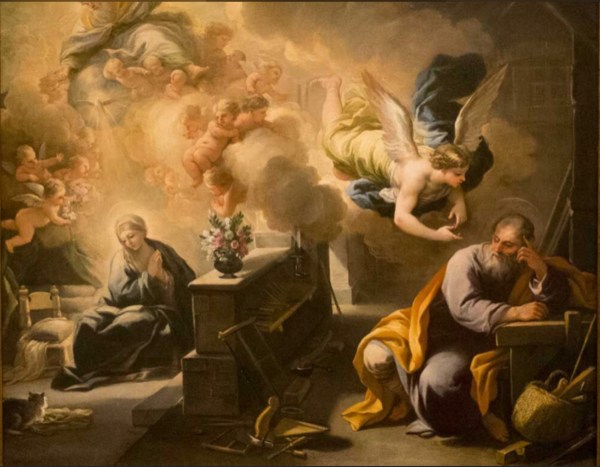
Next, because Chris and I have discussed baskets for tools, I took a look at the tool basket…and there it was. Holy Cow! At the end of the bench a wedge was in a notch. I sent this off the Chris. He had it one of the pdfs I sent but now I was sure he had not yet seen this detail.
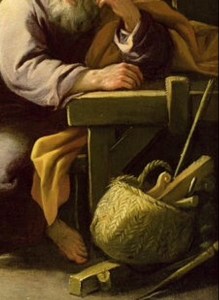
Was this a wedge in a dovetail- shaped notch? Could it be used as a planing stop? Could the wedge be taken out and the notch used for tenoning or something else?
Chris was on his way out of town but quickly replied. He was stunned. Very soon after he returned from his trip he drove the two hours to Indianapolis to see the painting for himself. In the blog post he wrote about it he said he almost wet his pants. Huh. I am pretty sure, although he was over 500 miles from me, I heard him shriek like a little girl, a 6 foot-3 inch-ish little girl.
One detail, well to one side of a painting, opened the door to further workbench explorations and discoveries.
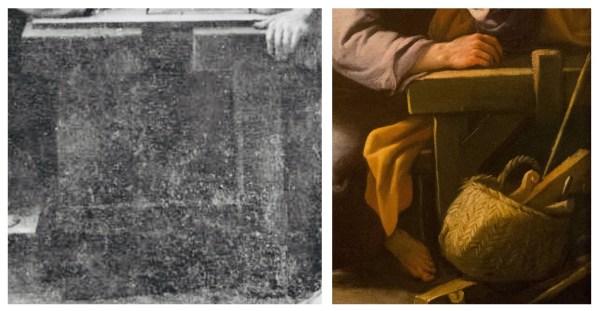
One of the paintings in my ‘Find It’ file was found on a Spanish site. It turned out to be German, part of a ten-panel work by 16th-century artist Bernhard Strigel of Memmingen and in the collection of the German National Museum in Nürnberg. It has a squared notch on the long side of the bench the painting is dated in the same year as the Löffelholz Codex.
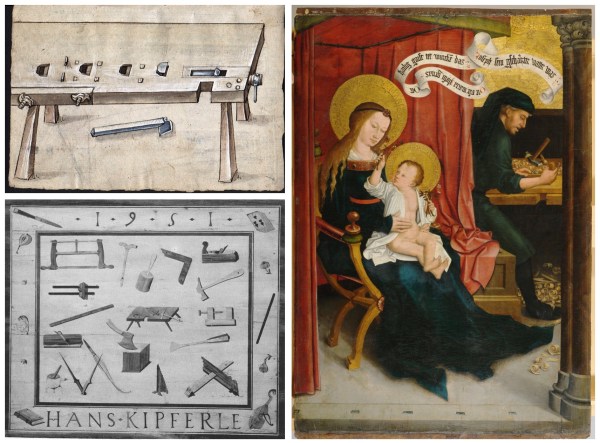
Two other images of workbenches with the straight-side and square notch have long been known to woodworkers: the Löffelholz Codex from Nürnberg and the guild table from Bolzano/Bozen.
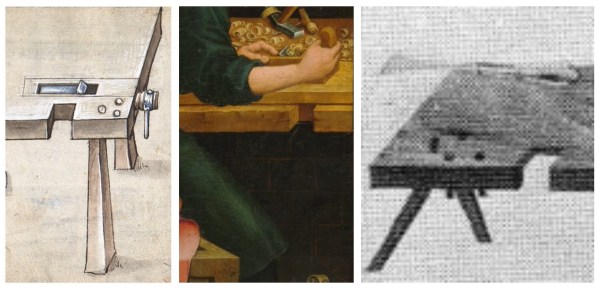
Strigel’s painting helps to confirm the presence of the notch on workbenches, at least in this southwestern part of Germany and/or Löffelholz wasn‘t crazy. Additionally, the Hans Kipferle table tells us that a half-century later the side notch was still in use.

If we step back to the time of the Roman Limes Germanicus and the Roman road network you can see another dimension to the European workbenches with side notches: where the workbenches are located.
So what happened next? Chris went to the shop to try out the theory of the ‘notches and wedges’ on the Saalburg and Holy Roman (Löffelholz) workbenches.
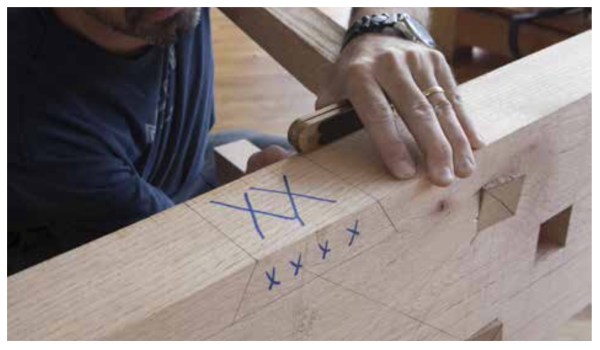
The side notches with the wedge in place serve as side stops for traverse planing.
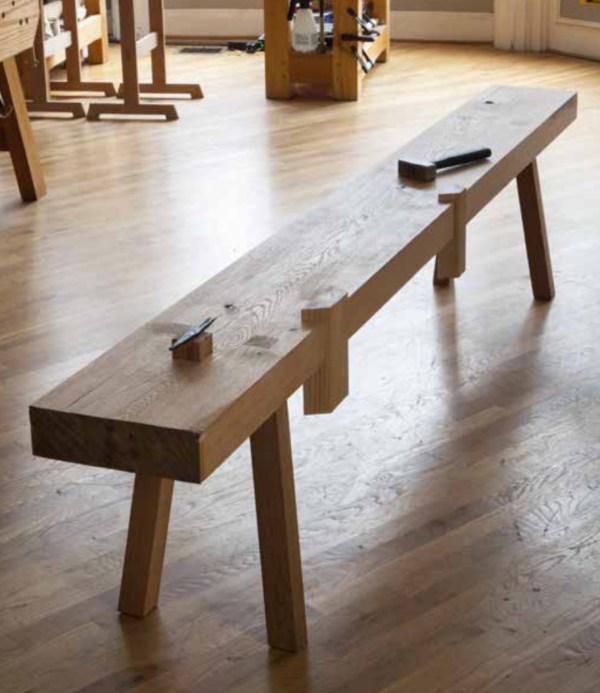
On the Holy Roman workbench notches were cut on the end and one on the side.
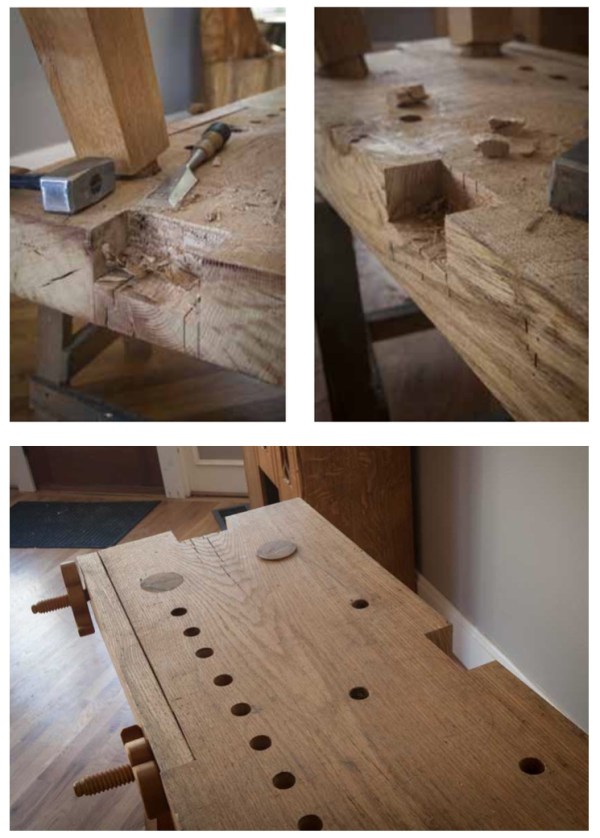
Several weeks before he finished “Ingenious Mechanicks” Chris invited some woodworker friends to a Benchfest. He challenged them to use and critique the three workbenches, French belly and shaving horse attachment that he built for the book. He took notes and Narayan Nayar took photos. The notches with wedges and the notch as vise (with a small wedge) worked beautifully. It was another example of a seemingly simple workbench feature having multiple uses in the shop.
Since the publication of “Roman Workbenches” and the Saalburg visit a cornucopia of workbench and workholding ideas have surfaced and are packed into the forthcoming “Ingenious Mechanicks.”
If you are still on the fence, undecided or torn about adding “Ingenious Mechanicks” to your library Chris will post a short video later in the week to illustrate some of the features of the workbenches.
— Suzanne Ellison